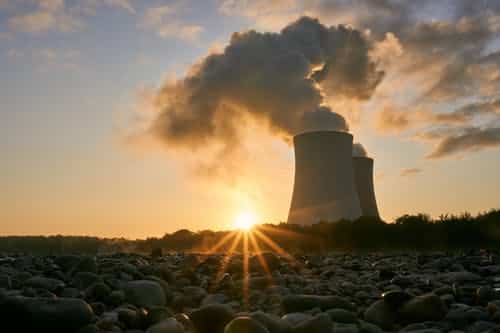U.S. Energy Department to Build Versatile Test Reactor to Advance Next-Generation Nuclear Technologies

The U.S. Energy Department on Aug. 3 issued a notice of its decision to build a Versatile Test Reactor, VTR, at the Idaho National Laboratory. The initiative would facilitate the modernization of U.S. nuclear energy research and development infrastructure and accelerate technology development for current and next-generation reactors. The sodium-cooled reactor would be the first fast spectrum test reactor to function in the country in nearly three decades.
The agency established its VTR program in 2018. Once constructed, VTR would be capable of generating higher neutron fluxes for testing nuclear materials up to 10 times faster compared to currently available capabilities in the U.S., according to the department. VTR experiments would significantly lower the time required to develop nuclear fuels, materials, instrumentation, and sensors for reactors.
The department prepared an environmental impact statement to examine the potential impacts of alternatives for assembling and operating a VTR and the related resources required for post irradiation inspections of test and experimental fuels and materials.
The agency decided to execute its preferred alternative to manufacture and use a VTR at the Idaho lab, and to determine through amendment and erection co-located facilities for post-irradiation examination of test products and for the management of spent VTR driver fuel.
The final environmental review assessed:
- Production and management of the VTR at the Idaho site and the Oak Ridge National Laboratory; this consists of operating and staging experiments in the VTR, post-irradiation assessment of test specimens in hot cell facilities, and training and storing exhausted nuclear fuel awaiting shipment for provisional storage or permanent clearance.
- Making of fuel for the VTR at the Idaho site and/or the Savannah River site, together with making feedstock for the fuel, fabricating fuel pins, and building the fuel pins into reactor fuel.
- A no-action option under which the department would not engage in the building and usage of a VTR.
The department would use or expand existing, co-located, post-irradiation examination capabilities as essential to achieve the objective and produce VTR driver fuel, and to manage radioactive wastes and spent nuclear fuel. The DOE facilities would be capable of receiving test articles from the user community, as well as fabricating test articles for insertion in the VTR.
The VTR will act as a national use facility, providing a fast neutron spectrum test capability for the testing and development of advanced nuclear technologies. As it stands, the department has not decided whether to establish a VTR driver fuel production facilities at the Idaho or Savannah River sites or a combination of the two sites. Once a favoured alternative or option for VTR driver fuel production is found, the department will announce its preference in a Federal Register notice.
EnerKnol Pulses like this one are powered by the EnerKnol Platform—the first comprehensive database for real-time energy policy tracking. Sign up for a free trial below for access to key regulatory data and deep industry insights across the energy spectrum.
ACCESS FREE TRIAL